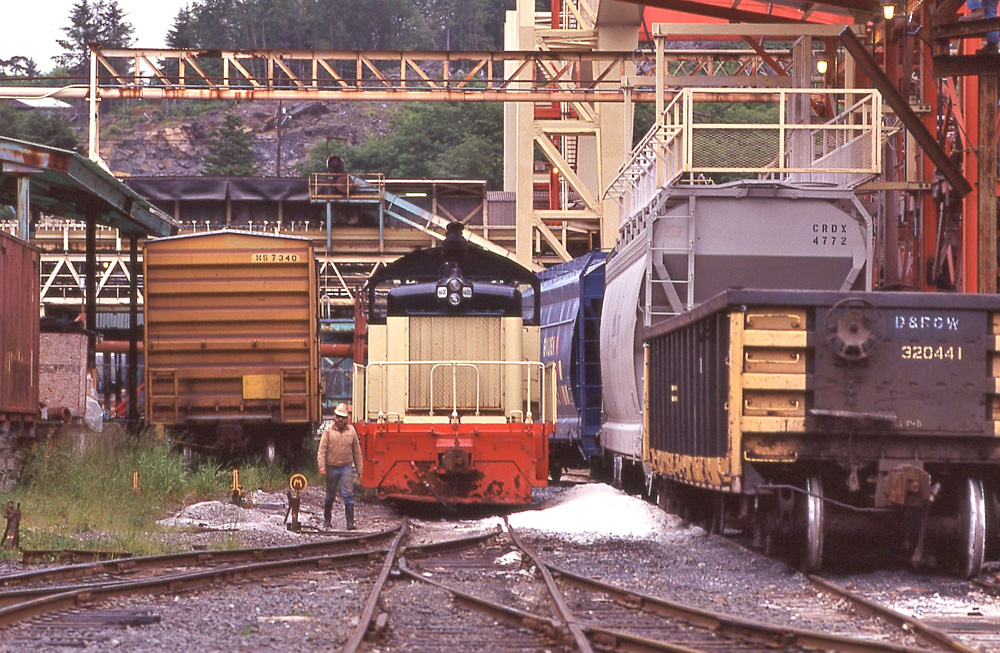
Alaska is a state like no other. It is the largest in the Union but has fewer than 800,000 residents. There is only one currently operating “mainline” railroad. Local trains still stop in the middle of nowhere for off-the-gridders needing transportation to and from traditional towns.
Outside its cities, villages, and oil exploration sites, it is still the world before humans. There are many spots where you can stand on a mountain peak and look in any direction as far as the horizon and see nary a hint of man.
Way down at the end of the panhandle of the state, about 700 miles northwest of Seattle, is Ketchikan, a small hamlet hovering around 8,000 souls. Cut off from the world by a lack of connecting roads, the most common to-and-from transportation methods are by ship or aircraft.
Which leads us to Ward Cove (aka Ward’s Cove), a handful of miles northwest of Ketchikan, which is also the site of the Ketchikan Pulp Mill — a one-time very large operation that closed in the late 1990s.
When my wife and I planned an Alaskan cruise in the earlier part of the decade, I noticed one of the ports of call was Ketchikan, which reminded me of the Ward Cove mill and the recently acquired knowledge it had its own railroad operation.
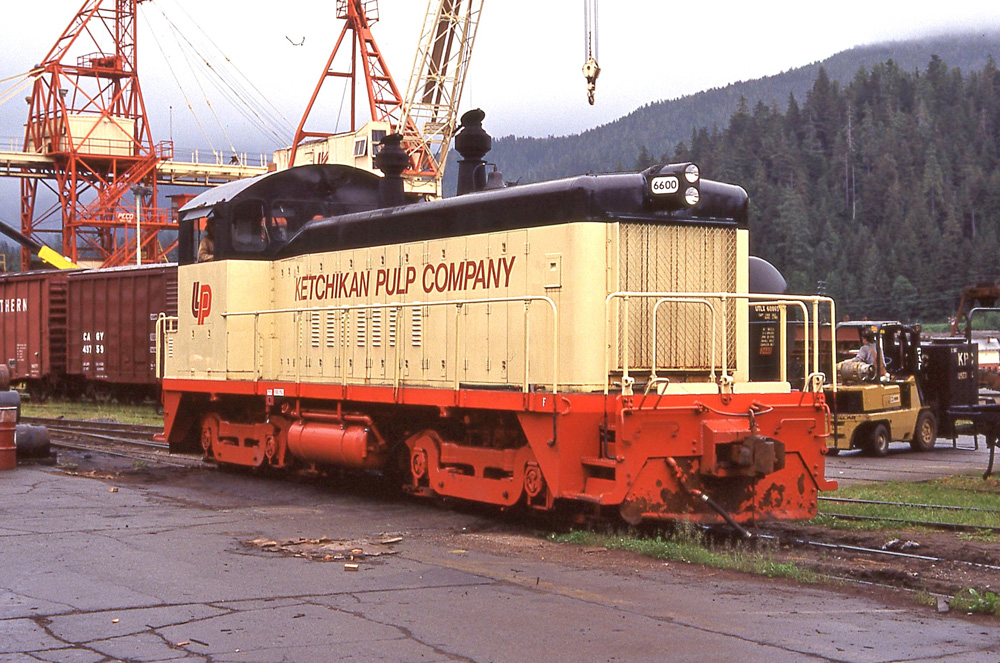
Here? In the middle of nowhere?
Absolutely. I soon learned that freight cars were barged in from a Canadian National connection at Prince Rupert, British Columbia, and carefully docked at the mill’s slip. There, a diesel locomotive would remove the incoming empties and replace them with loaded ones. This I had to see.
A call to the mill directed me to owner Louisiana Pacific’s head offices in Nashville, Tenn. Once management got its collective head around why a tourist on a cruise would want to photograph their railroad, I was greenlighted for a tour. When we docked at Ketchikan, my wife and friends would enjoy the sites and sounds of the area while someone from the mill would meet me at the dock.
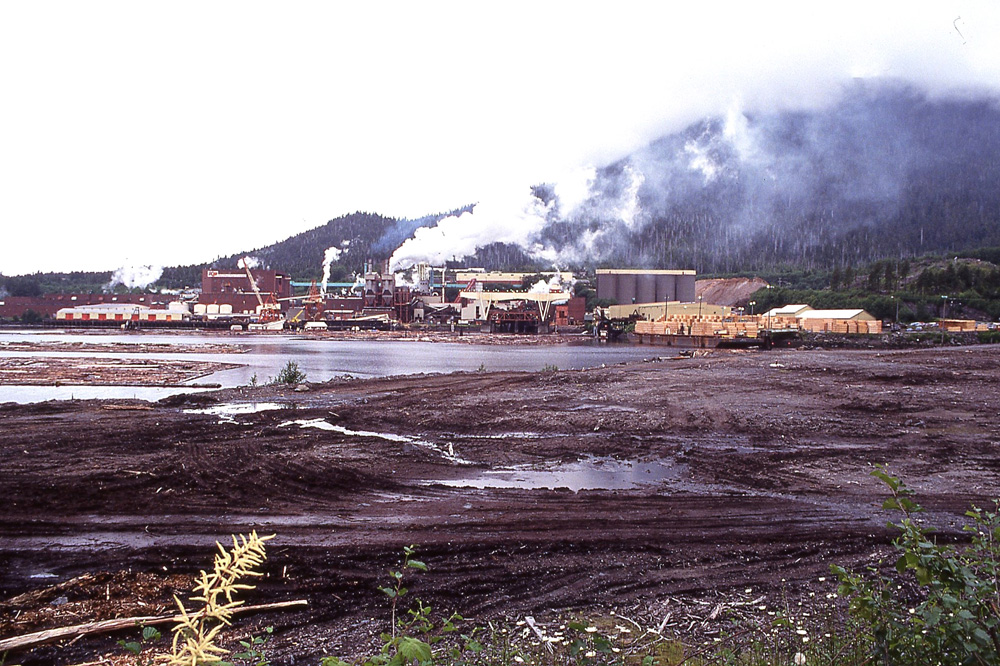
My adventure begins!
Built in the 1950s, the facility was a dissolving sulfite pulp mill, and it soon became one of the biggest employers in the area. Once the mill made the incoming trees into pulp, the product was loaded onto freight cars, barged south, and sent to other processing facilities to become one of the ingredients in such items as tires, medical masks, rayon, and cosmetics.
The mill kept its captive smidgen of track — just over a quarter mile of it — quite busy and required dependable motive power. When built in the 1950s, it was switched by a new center-cab, 50-ton, 500-hp Whitcomb. After that, a more powerful locomotive was needed, and a former Southern Pacific 1,200-hp Baldwin switcher was brought in. By the time I visited, the Whitcomb was still there, acting as backup power, and the Baldwin had been replaced by a 1,200-hp EMD switcher.
Besides getting a tour of the mill, I was allowed to take photos of the rail operation to my heart’s content, watching the EMD end-cab switcher drill cars back and forth and then set up the loads to be shoved onto the barge after the inbound empties were pulled off.
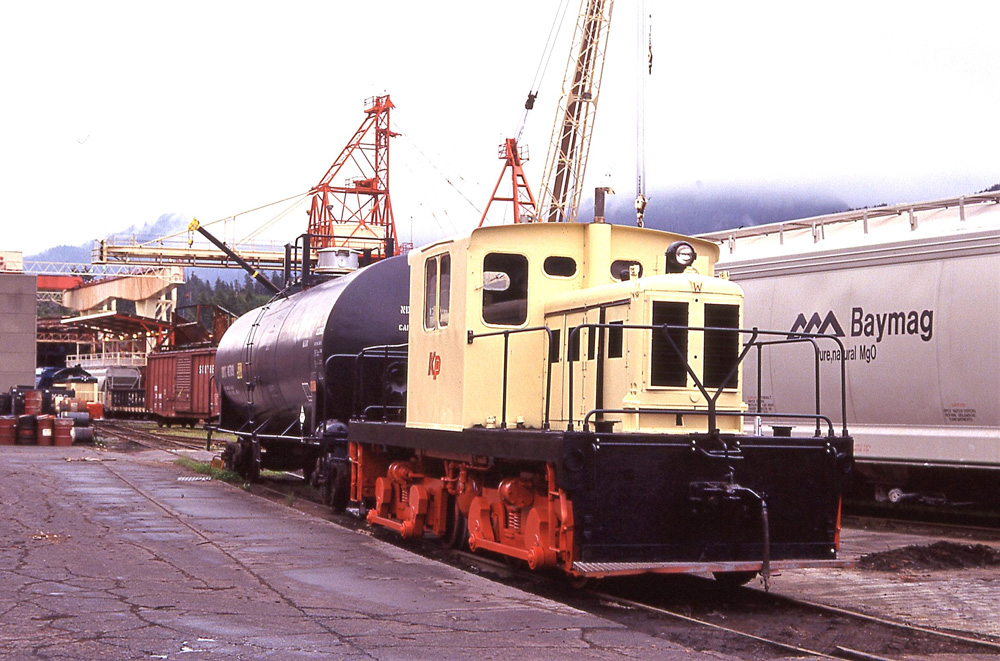
Environmental concerns and other factors forced the mill to shut down shortly afterwards. Today, the buildings no longer hum with the sound of equipment converting the trees to pulp. But, and it’s an important but, the facility is still there. Today it’s “The Mill At Ward Cove,” a new development for incoming cruise ships and tourists.
The planners have not forgotten the mill’s past, and while tourists can take a shuttle directly into Ketchikan, there are plenty of shops, restaurants, and other novelties to see right on the former mill grounds. The complex even has a museum showcasing the area and all it has to offer. There are even a few freight cars that have been converted to restrooms.
To learn more of its present-day appearance, go to https://wardcoveak.com/
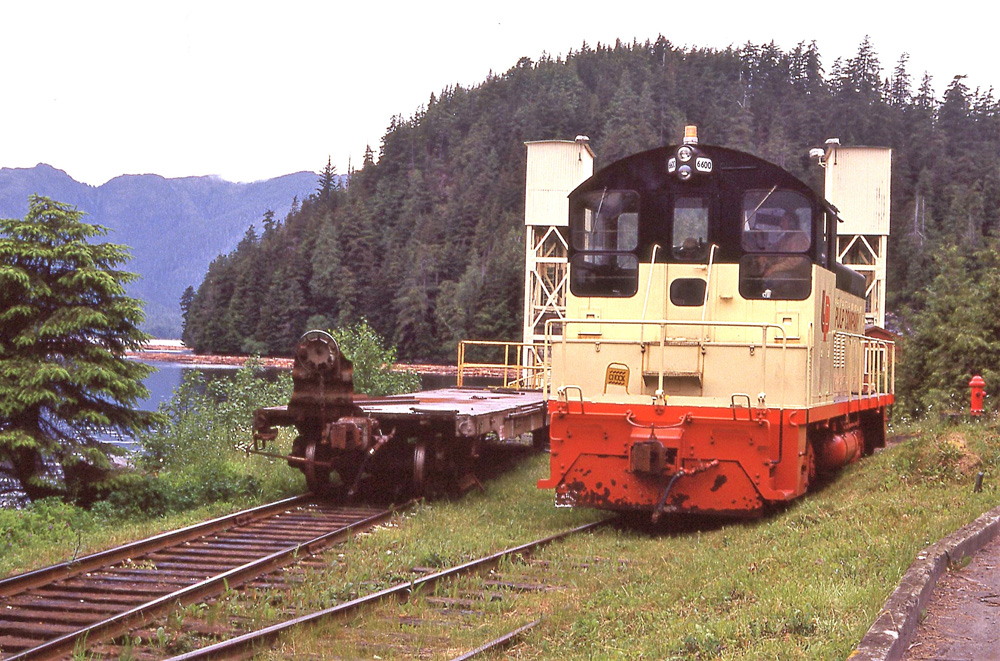






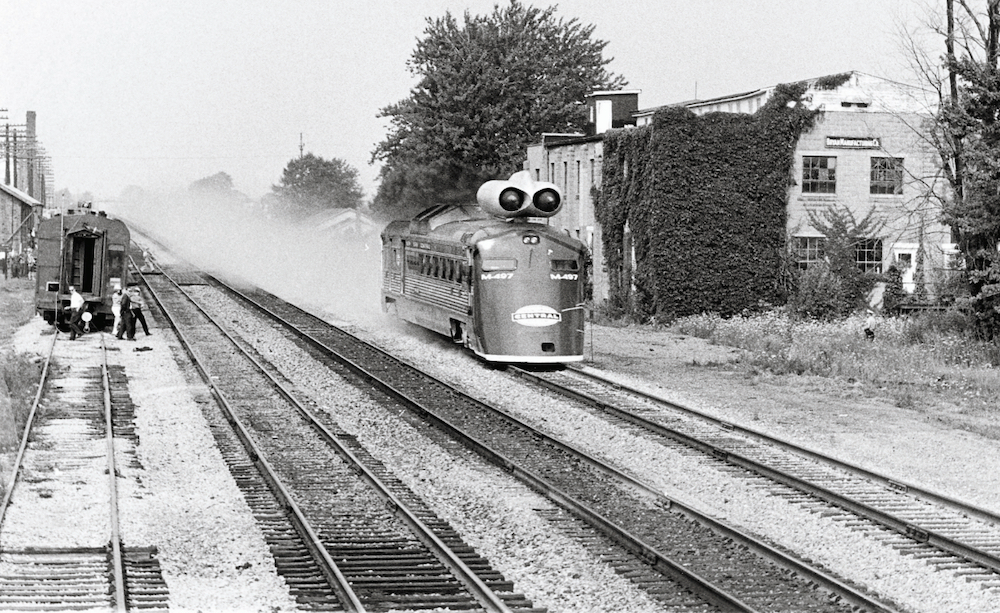
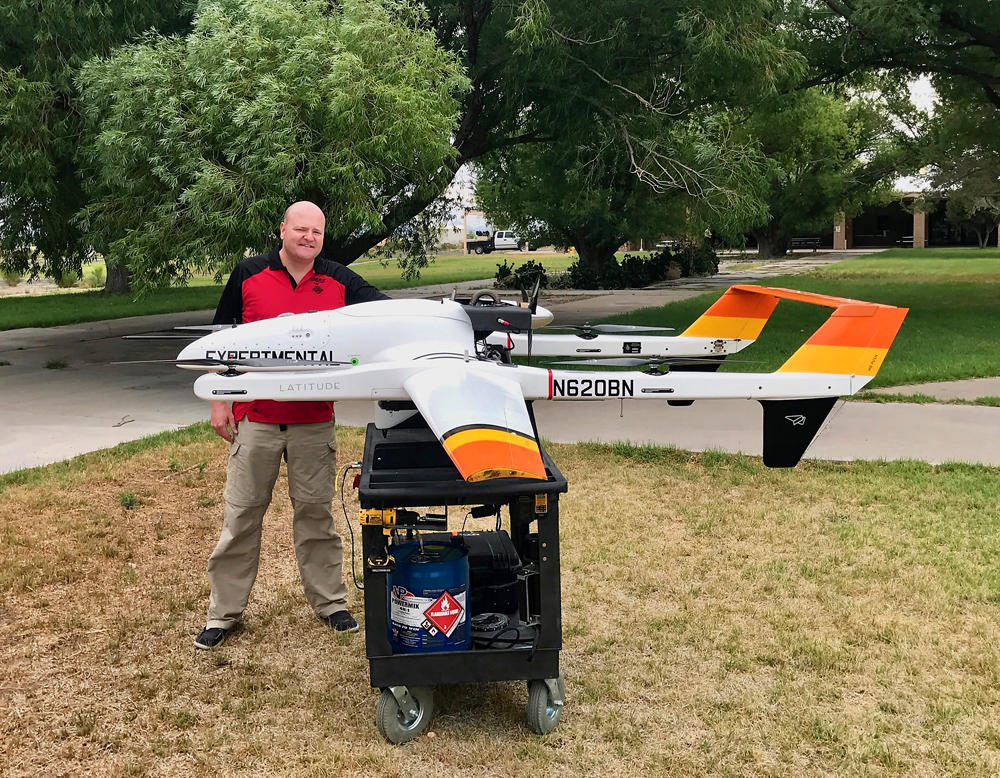
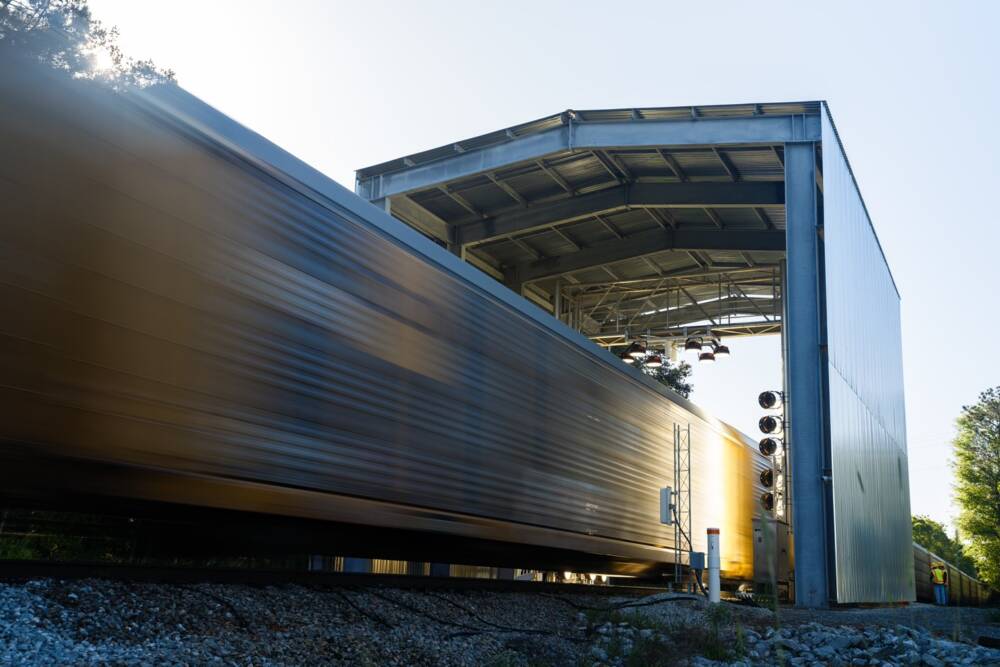
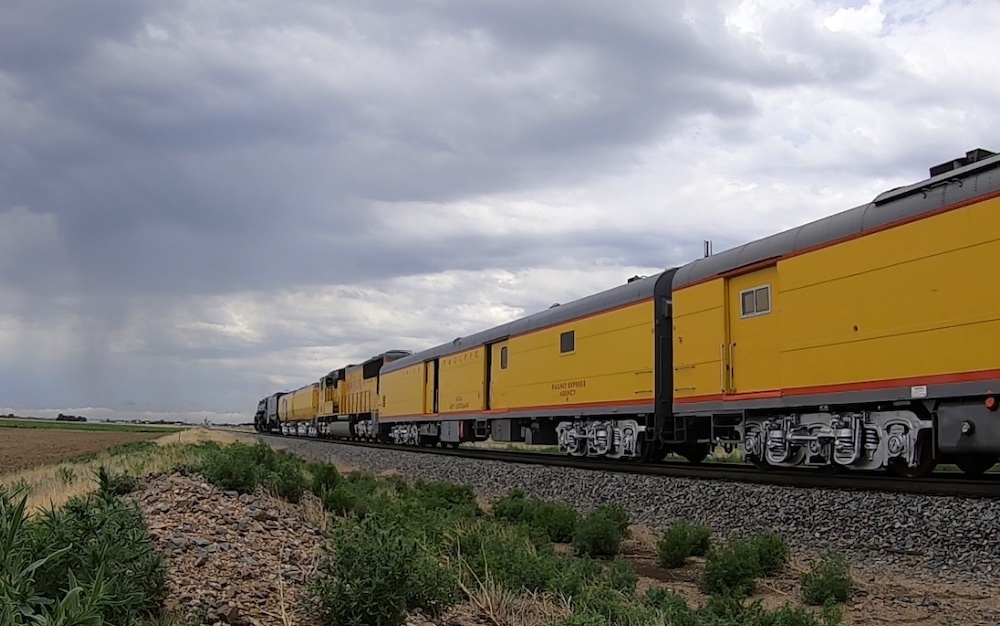




I worked at Ketchikan Pulp’s logging camp at Thorne Bay in 1964, 1968 and 1969. If they had a steam locomotive I would have found it, but it was after my last stint that I realized I had a reason to visit the mill. Thank you for the article.
Cool article. I never knew about this operation.